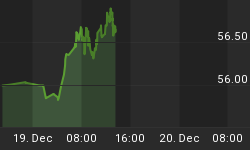Triplet warnings spell doom for hardware companies
The bulls must be scratching their heads.
Despite a handful of positive data points, they were unable to manufacture a meaningful rally today.
The positive data I'm talking about is a record number of new home sales in June, a stronger-than-expected durable goods report, a positive inventory report from the Energy Department, and good earnings news from Amazon.com, Corning, Sprint, Sun Microsystems, and Boeing.
A few weeks ago, that news would have been good enough for a triple-digit moon shot.
That news, however, was only good for a 57-point gain.
The inability of the bulls to really goose the market today could end up being a very telling tale of exhaustion and the mark of an important market top.
Triplet warnings spell doom for hardware companies.
Instead of analyzing the main news issues of the day, I want to instead show you how a trio of warnings in the same industry are symptomatic of weak end demand for tech hardware.
The trio I'm talking about is Sanmina-SCI, Celestica, and Flextronics.
All three of these companies are "contract manufacturers," which are companies that performs all or some aspects of manufacturing on behalf of someone else -- usually OEM or original equipment manufacturers.
These companies do well when their clients -- such as IBM, Hewlett Packard, Cisco, Apple, and Nokia -- are doing well. Conversely, when their customers suffer, these companies suffer too.
Let me tell you, the tech contract manufacturers are not doing well at all.
WARNING #1: Q2 wasn't so hot at Sanmina (Nasdaq:SANM), who reported a $202,000 loss on $2.83 million of sales. Not only is Sanmina going backwards (2 cents of profit last year), it is far below the 6 cents on $2.9 million of sales Wall Street was hoping for.
Next quarter isn't going to be any better. For Q3, Sanmina now expects to report 4 to 6 cents of profit on $2.65 to $2.80 billion of sales. Again, that is well below the 8 cents on $3 billion of sales Wall Street was counting on.
An analyst from Piper Jaffrey figured out what the problem is:
"Lower guidance reflects continued PC uncertainties, a continued slowdown in semiconductor capital equipment, and an inventory burn in multimedia."
IBM and Hewlett Packard each accounted for 10% of Sanmina's total sales for the six-month period ended April 2. Nokia and Applied Materials are also large customers.
WARNING #2: Celestica (NYSE:CLS) reported the same type of dismal news on July 22, when it told Wall Street to take down its Q3 forecasts from 20 cents to 9-19 cents instead.
The problem, according to CEO Steve Delaney is pretty simple:
"Q3 demand is rolling up weaker than the seasonality we would typically experience."
That's just another way of saying that business stinks and that end demand is weak.
By the way, Sun Microsystems, IBM, Lucent, and Cisco are Celestica's largest customers.
WARNING #3: Flextronics (Nasdaq:FLEX) reported Q2 profits of 10 cents a sharem which is down the from 13 cents it made last year and way below the 16 cents Wall Street was expecting.
Q3 is going to be worse than Wall Street expects too. Instead of 19 cents, Flextronics warned that it may only 18 cents instead.
Flextronics largest customers include Ericsson, Microsoft, Dell, Siemens, Hewlett Packard, and Alcatel.
We're talking pretty simple connect-the-dots type of logic here.
If a local dry wall distributor tells you that orders for dry wall have dried up (sorry for the pun!), you can assume that the local construction business is slowing down.
If the manufacturer of boat engines tells you that its orders for boat engines have slowed down, you can assume that boat sales are going to slow down too.
If Sanmina, Celestica, and Flextronics tell that the Q3 is going to be disappointing, you can assume that its high tech customers are selling a bunch of electronic doodads either.
I pay careful attention to what the contract manufacturers have to say because they give me a very informative and accurate peek into the future of the high tech world. And based upon what they contract manufacturers are telling us, it should be clear that the same weak end demand is going to trickle down to the hardware companies they do business with.















